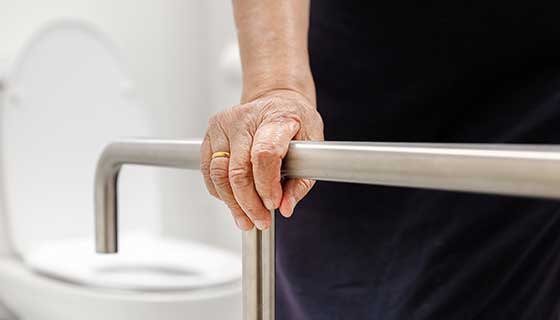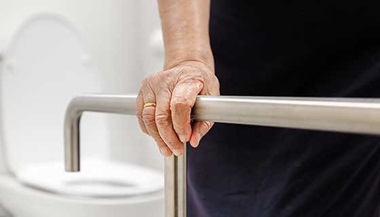Fall Prevention: Balance and Strength Exercises for Older Adults
Reviewed By:
Falls can have very serious consequences as we age. Each year, more than 25 percent of adults 65 or older have a fall, and 3 million are treated in emergency departments for fall injuries, according to the Centers for Disease Control and Prevention.
Fall Risks
The risk of falling in older adults is usually related to combination of factors, including:
- Balance and/or walking problems. Balance can be affected by vision changes, vestibular problems and altered sensation in the feet.
- The use of multiple medications. Studies indicate that when individuals take five or more medicines, the risk of falls increases.
- Home hazards (including dim lighting and trip hazards)
- Positional low blood pressure (such as orthostatic hypotension, when blood pressure drops upon standing.
- Feet and footwear issues
Falls often occur in the bathroom when sitting or standing from the toilet or shower, or at night in a dark bedroom when getting up quickly and tripping on the way to the bathroom.
Exercises to Prevent Falls
While it’s not possible to completely prevent a fall, exercises that focus on balance and strength training can reduce the risk of falling. “We treat elderly adults for injuries sustained from falls, and other patients who feel unsteady while walking or standing and are fearful of falling,” says Lora Stutzman, a physical therapist with the Johns Hopkins Rehabilitation Network. “These exercises can help improve balance and build strength to help prevent future falls.”
For older adults, activities such as squatting, standing up from a chair and walking may be difficult or cause them to feel unsteady, which increases their risk of falling. The following exercises are intended for those who have a low risk of fall and are able to stand on their own without support from others. Always talk to your doctor or physical therapist first before starting new exercises, especially if you have weak balance.
Stutzman demonstrates two exercises below.
Sit-to-Stand Exercise
The sit-to-stand exercise builds leg strength and improves body mechanics and balance, which are all important in reducing falls.
1. Start by sitting on a sturdy chair of standard height, and make sure that it won’t slide or roll. You should be able to sit comfortably with your feet flat on the ground. Have a sturdy support surface in front of you, such as a countertop, so that you can reach to it for support if you start to feel unsteady when standing. Scoot forward so your buttocks is positioned at the front of the seat.
2. Lean your chest forward over your toes, shifting your body weight forward. Squeeze your gluteal muscles and slowly rise to a stable standing position.
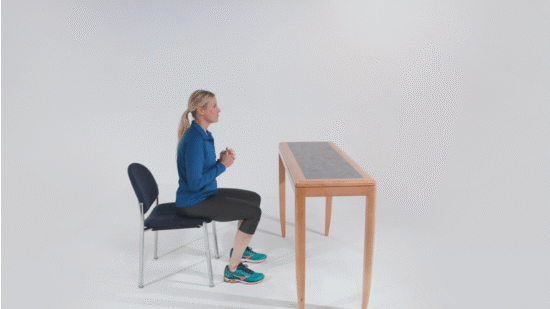
3. Slowly sit back down to the starting position and repeat 10 times.
4. If necessary, place your hands on the arms or seat of the chair and push through your hands to help stand and sit. The goal is to not use your hands at all.
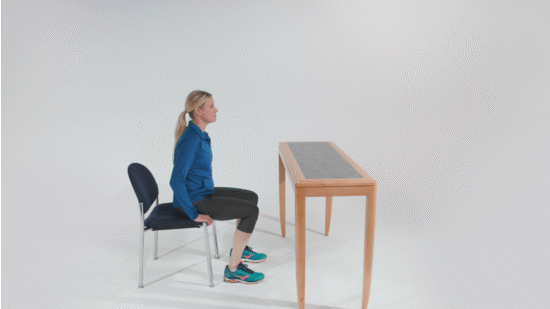
Perform 10 repetitions, twice a day. For an advanced version, hold hand weights to add resistance.
If you have pain in your knees, back or hips, discontinue and talk to your doctor or physical therapist.
Balance Exercise
This series of exercises helps if your balance is unsteady. Make sure you have someone with you in case you lose balance.
To begin, stand in a corner or have a kitchen counter in front of you to reach out to in case you start losing balance.
1. Feet apart: Stand with feet about shoulder-width apart, eyes open, and hold steady for 10 seconds, working your way up to 30 seconds.
If you find yourself swaying or reaching for the wall or counter frequently, just keep working on this exercise until you can do it with minimal swaying or support. Once you can hold this position firmly for 30 seconds, move on to the next exercise.
2. Feet together: Stand with feet together, eyes open, and hold steady 10 seconds, working your way up to 30 seconds.
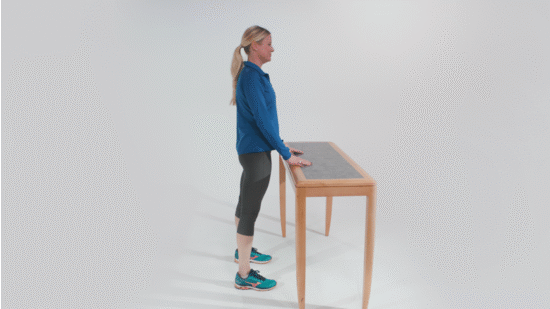
Once you can do this exercise for 30 seconds with minimal swaying or support, move on to the next one.
3. One foot: Stand on one foot, eyes open, and hold steady 10 seconds, working up to 30 seconds. Switch to the other foot.
4. Eyes closed: If you can perform the first three exercises safely and with little support, try to do each one with your eyes closed. Hold for 10 seconds, working up to 30 seconds.
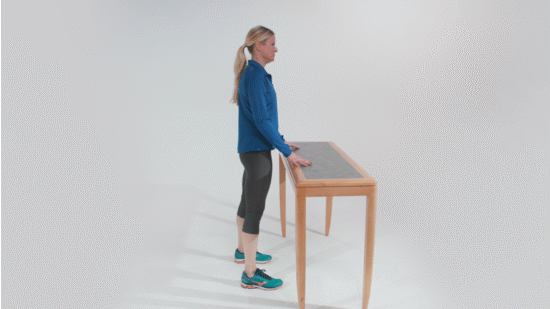
The goal for each exercise is to hold the position for 10 seconds and progress to 30 seconds, five repetitions (including five per leg on the one-foot exercise), two times a day.
Additional Steps to Prevent Falls
Remember, it’s important to talk to your doctor or physical therapist about fall prevention.
- Discuss medications and changes in your exercise routine.
- Tell your doctor if you fall.
- Ask a friend or family member to help check your home for trip hazards.
“Keep in mind,” adds Stutzman, “it is always best to have company at home with you while exercising for safety and supervision and in case you need help.”



